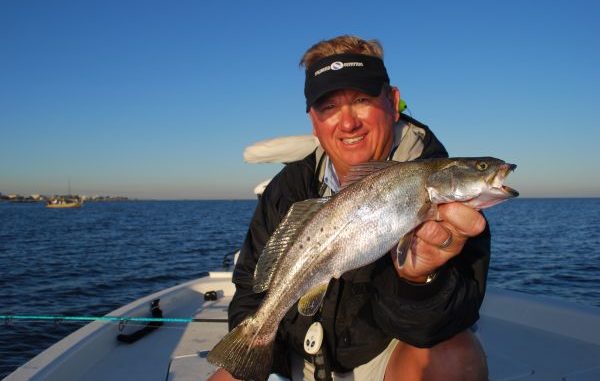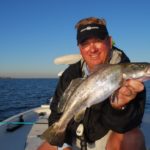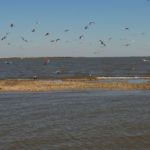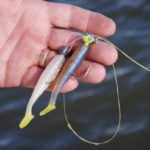
Of Louisiana’s seven speckled trout destinations, this one is hardest to describe (as well as being hardest to fish).
It’s not a bay by itself. It’s not a marsh system. It’s not a discrete lake.
But it’s definitely a unit that is independent of the other Louisiana trout hotspots.
It includes all of Vermilion and West Cote Blanche bays, a piece of East Cote Blanche Bay and the ancient reefs found hugging the Gulf side of Marsh Island, as well as reefs and oil and gas platforms located miles offshore and out of sight of land.
Two things define it: Discharges from the Atchafalaya River absolutely dominate the area’s fishing opportunities, and it produces lots of speckled trout and quite a few very big speckled trout — but only for six months each year.
The six-month season mean that very few charter guides work the area, marina facilities are limited and live bait is very difficult to purchase.
The challenges offered by the area don’t deter Steve Smith of Stillwater Outfitters (337-654-3880), and they might actually act as an incentive to speckled trout addict David Billeaud.
Billeaud, a Lafayette restaurateur who for six months a year spends every moment not at his business but with his family on the area’s waters, can certainly be considered an expert if one uses the CCA STAR as a measuring stick.
He has won his division twice (2007 and 2010), and in 2010 he not only won first but also second place in the entire state. He would have won a third boat in 2008, but STAR Tournament rules disqualify a person from winning a boat two years in a row. He also had a second-place finish in 2006, a remarkable run in this hotly contested tournament.
Billeaud started his assessment of his 2013 fishing year with an explanation of the peculiarities of fishing the area.
Muddy freshwater from the Atchafalaya River plumes offshore and westward during the river’s flood stage, he explained. Vermilion Bay turns into a freshwater lake, often from December through at least May, and sometimes into June.
River discharges also affect offshore waters miles into the Gulf from Marsh Island. The degree of effect depends on how high the river stages are and the prevalent wind direction. Southwest or west winds that prevail for several days can push river water eastward and replace it with clear, salty Gulf water, even if the river is high. With that pretty water come speckled trout.
Speck fishermen watch the Butte Larose gauge of the Atchafalaya River like hawks. When the river is over 18 feet, the whole area — from Nickel Reef (14 miles offshore from Burns Point) to Tiger Shoals (12 miles out) — is a muddy mess and unfishable. From 14 to 18 feet on the gauge, westerly winds provide breaks with fishable water.
Fishing really starts at 10 feet, when most of the reefs — even those near the Marsh Island shoreline — become productive.
By 7 feet, all of Vermilion Bay gets good.
“All that being said,” sighed Billeaud, “last year was only OK. It wasn’t the worst, but it wasn’t the best, either. It was an odd year. I started on Easter weekend at Tete Butte Reef, really early for us, and fished all the way to the New Year, when cold shut us down. That’s really late for us.
“Some years are so good it messes your memory up. Last year wasn’t one of those.”
Billeaud’s friend, fishing guide Steve Smith, saw 2013 as “remarkably good.” During the first half of the year he guided in Lake Calcasieu, but as soon as he could (which was late June) he returned to what he calls home.
“I started fishing here offshore at Tiger Shoals and Vermilion Blocks 51 and 52,” Smith said. “As the summer went on, I moved to the reefs just outside of Marsh Island, like Pavy and Tete Butte. By September, the bite turned on in the Dry Reef (located in the center of Vermilion Bay) area.
“By October the Hammock, the Cove and Blue Point became exceptionally good.”
And it wasn’t schoolie action.
“They were all solid fish,” Smith said. “I don’t think that I threw back 20 small fish all season. My personal biggest was only 6 ½ pounds, but they were still solid, good fish. Now keep in mind that I don’t fish in small-fish places like Caldwell Reef just outside of Southwest Pass.
“The bite lasted to Christmas, when it got cold, wet and miserable.”
Both men were clearly unhappy when asked to make a prediction for 2014.
“That question sucks,” Billeaud said.
The rest of their reply was so in synch that it was almost as if they had rehearsed.
They said their fishing will be at the mercy of snow melt, rainfall and the river. Both noted a massive snow pack up north. Rainfall in March and April on top of the snow melt are really critical.
“I’m nervous about the outlook,” Billeaud admitted.
Smith stressed that the cold winter probably won’t cause them any problems, but runoff from the northern states could mean that they will see a high river until July or even August. He recalled a few years ago when the river was so high that Morgan City was in jeopardy of being flooded.
“Then the water peak flushed by, and we had an excellent season. “Everything depends on clear water.”
When questioned as to their early season strategy, it was Smith’s turn to be blunt.
“If you want to go trout fishing in April, go to another estuary,” he said. “Either that or go fish redfish around the Jaws.
“In May, if you get west winds and things look clear offshore, you can take a stab at all the Tiger Shoals hotspots.”
Things normally begin to turn around the following month.
“In June, in most years,” Smith said, “you can really start looking for the river to fall, but fishing will still primarily be offshore and on the reefs outside of Marsh Island.
“July usually allows fishing on the outside reefs like Tete Butte, Pavy and Diamond, but a lot depends on wind direction and strength. By the end of the month, the reefs inside Vermilion Bay become productive.
Billeaud’s predictions mirrored Smith’s but, being the hard charger that he is, they were a month ahead of Smith’s.
“But,” Billeaud added, “everything is up in the air this year. Predictions are that everything will be late, but as late as February the Atchafalaya River was still low and Vermilion Bay was still salty.”





